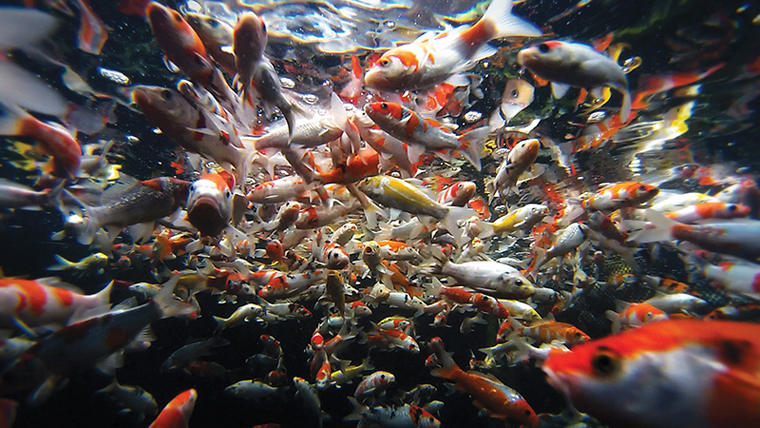
Over the last decade, more than 35 percent of our pond construction contracts have involved remodeling existing ponds. While this is an important statistic that cannot be ignored, the really surprising fact is, we are removing beautiful ponds that have been pressed beyond their limits by their homeowners. One word comes to mind — overstocked!
>> Related Content | Pond Bottom Drain Technology
The sad reality is that most people cannot afford a complete pond remodel. The wonderful spin to this reality is, if you and your team become skilled at adding filtration and upgrading filters on an existing pond, you can create a steadily flowing stream of revenue.
A Multipronged Approach
One of the most frequently asked questions I get about pond design is, “What size of pond will that filter keep clean?”
My answer is usually something like this: I don’t believe any filter as a standalone is a good idea for a pond, regardless of size or total gallons. We always take a multipronged approach to filtration. We design systems that start with quality prefiltration and then work in both mechanical and biological filtrations including, but not limited to, moving bed filter technology, active bog filters and airlift technology.
While most pond manufacturers including myself want to sell fancy black boxes and filter pads, the consumer really doesn’t care so much about the label as much as they want something carefree, easy to maintain and beautiful to look at, keeping their koi happy and healthy.
Lean on Mother Nature
Using Mother Nature by adding aquatic plants in and around the pond is a great way to give your client what they need and still turn a profit. As a rule, aquatic plants consume nutrients from the water column and improve water quality, adding to filtration. But if you actually implement a system where you circulate water to the roots of the plants, the results are staggering.
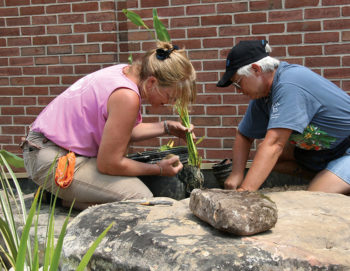
Aquatic plants that are installed in an active bog filter grow at an amazing rate when compared to aquatic plants grown in static planters and shelves in and around the pond. Study active bog and wetland filtration until your eyes turn green, and it will put some green in your wallet, too.
I have cured many ponds plagued with cloudy water by simply adding a moving bed waterfall filter. We have resolved ponds with heavy particulate issues with the addition of biomechanical pressure filters and gravity-flow sponge filters of all styles, sizes, shapes and brands. We try to manufacture what we need, but we don’t hesitate to buy from another brand that offers the right solution to our client’s problem.
When They’re Ready for Dirt
While we rarely get calls from customers who want to give up on their pond, even once a year is too much for us! When we get that call from a client who feels that they have tried everything on their pond and just can’t get it cleared up, they are usually so frustrated that they’re ready to just fill it in with dirt. It is so disheartening!
When we get that phone call, we see it as a wonderful opportunity to solve problems and rescue some pond fish. When we know someone is almost ready to throw the towel into the ring and the dirt into the pond, we try to get them to turn over a new lily pad and start enjoying their pond again.
Fish Grow. Filters Don’t.
Fish population is really the easiest thing to overlook. When a pond is new and the fish are small, your typical filtration has no problem keeping up with the waste production. As the years roll by, the fish grow, but the filter doesn’t.
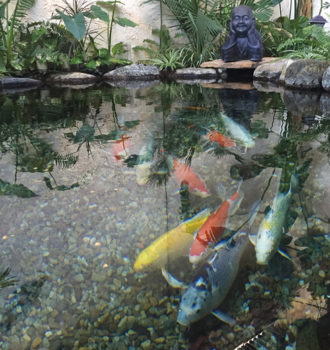
When koi double in size, they produce up to 10 times more waste. It might seem unbelievable, but it’s true — 10 times more poop! So those six cute little 4-inch koi your customer started with are now 20-inch behemoths, cruising around the pond like Russian Typhoon-class submarines, producing Chihuahua-sized poops and making the filter cry uncle.
Fish waste, whether in the form of poop or ammonia, causes water quality to deteriorate. Poor water quality causes undesirable algae, and it’s the No. 1 reason people want to fill in their pond with dirt.
The filter that was fine before for the young fish is now simply too small. Imagine if when you got married, you and your spouse have a sporty little two-door coupe. As the years go by, you start having children, and suddenly, there are simply not enough seats in the car. So you go bigger, right?
So, upgrade the filter. Or better yet, go the multipronged approach and put in a secondary filter. That way you can retain the established beneficial bacteria colony that the original filter had. It is so simple, yet it is often overlooked.
Be wary of a filter that’s too small. It will be unforgiving if the customer adds new fish on a regular basis. Even just one fish a year becomes 10 whales just 10 short years later.
Never Skip the Upkeep
Maintenance is the key to keeping a pond clean and clear. Cleaning the filters frequently and performing regular water changes can overcome a plethora of pond challenges. It is not unusual to find an unhappy pond owner who has not performed the annual spring drain and clean for several years, only backwashes their pressure filter once a month in the summer, or only cleans their filters when the waterfall slows down.
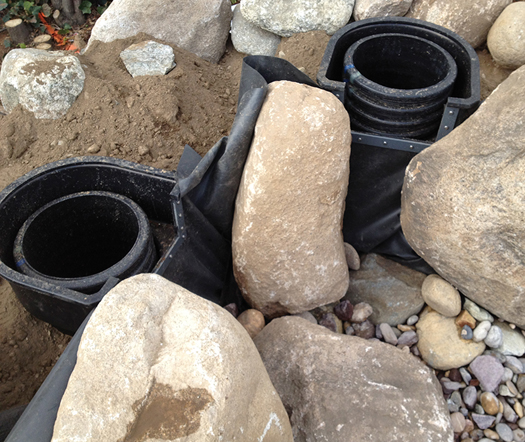
Pardon me, but a pond owner has to keep a regular pond-cleaning schedule. Your fish keep pooping, even if it is the dead of winter. Here’s the real kicker: 75 percent of fish waste is ammonia expelled by their gills from breathing. So, don’t try to tell me, “It’s winter; the fish aren’t eating, so there’s no need to clean the filter.” That’s simply not cutting it. If those fish are still breathing, they are still producing waste.
Fish waste, whether in the form of poop or ammonia, causes water quality to deteriorate. Poor water quality causes undesirable algae, and it’s the No. 1 reason people want to fill in their pond with dirt. It also causes poor water clarity and reduces the fish’s immunity, causing them to get sick easily. Eventually, the solids can build up on the bottom of the pond, making a mucky, gross buildup that smells like rotten eggs.
So, clean that pond. Clean the filters. Clean the skimmers. Add beneficial bacteria. Do water changes. And please, if the pond type requires an annual spring drain and clean, do it every spring, even if the pond looks great. If you skip it, pretty soon, it won’t look great, and then your customer will be on the hunt for a shovel and a semi-truck load of backfill soil.
Our Mantra
Proper filtration obviously goes hand in hand with fish load, but sometimes customers don’t even start out with the right filter for their original 4-inch koi. We see this most frequently with those little pond kits that come from DIY stores, big box stores, hardware stores and the highly competitive “pond-in-a-box” offerings from online low-margin “e-tailers.”
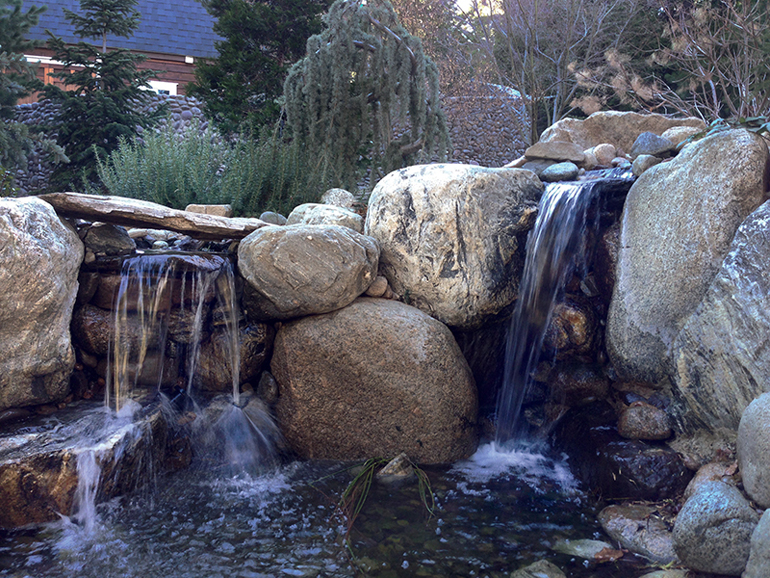
These ponds are typically too small to house koi in the first place, as most of those preformed ponds are less than 150 gallons. An adult koi needs at least 250 gallons of water, but it does much better in 500 gallons of water. In addition, the “filters” they typically come with are really prefilters that sit in line before the pump. They are designed to keep the pumps from clogging with debris, not to keep the water clean.
Make sure the filter your customer has is designed to keep the water clean, not just keep the pump from clogging. It should sit outside the pond somewhere, potentially in the waterfall, or beside the pond, where it easily can be cleaned of captured fish waste, plant debris and excess food on a regular basis. Most need cleaning as frequently as once a week.
Understanding the fundamentals of all the different types and brands of filtration will set you and your customer up for success. Take a deep dive into filtration, from gravity flow to pressure filters, and from static waterfall filters to moving bed waterfall filter technology.
Whether or not your certifications or affiliations in the business allow you to use these filters, make sure you understand when and why we use separation tanks and UV clarifiers, and learn the breaking point when a biological filter turns mechanical and ultimately fails. Understanding failure is always a pathway to opportunity.



Thank you this was very helpful. Can’t wait to see you in February 2019 in Okla. Wish you could come and see mine to give me helpful advice. Mine is over 20 years old and is 1300 gallons.